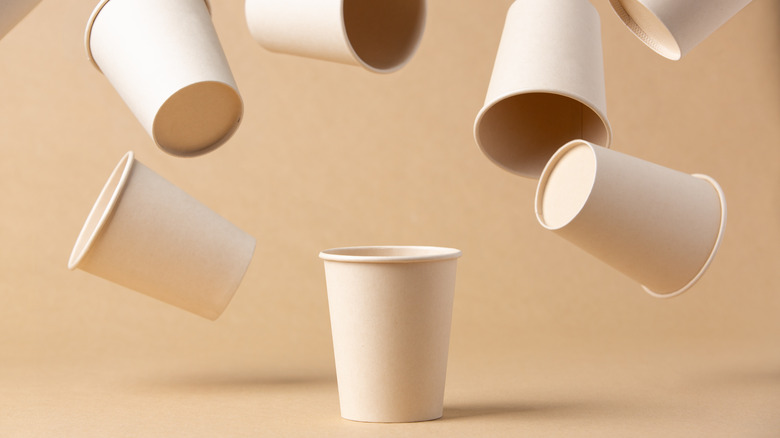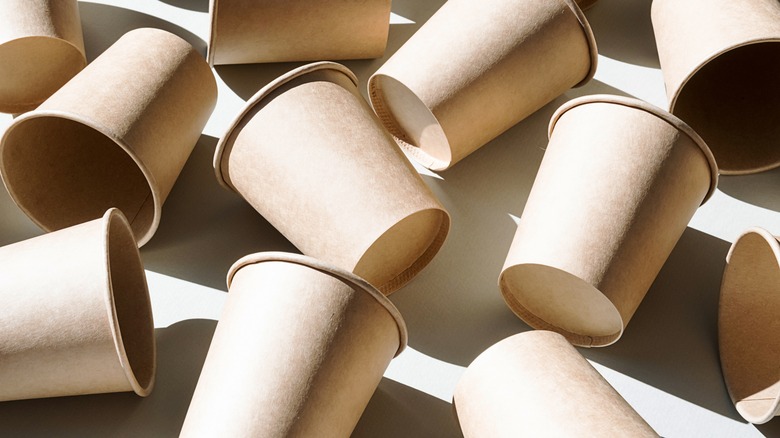This Is What Disposable Coffee Cups Are Really Made From
You can argue that the world literally runs on coffee. In fact, upwards of 40% of the world's population drink coffee every day, averaging over 166 million 60-kilogram bags of coffee consumed in 2021 (via Statista). You might be one of those coffee fanatics that wakes up early to brew yourself a perfect cup of joe from your French press or espresso maker every morning, or you might dish out a couple bucks every day and swing through Starbucks or Dunkin' Donuts to get your caffeine fix.
No matter how you consume your coffee, there's one thing in common we all need when we drink it: cups. While this might seem like a simple statement, it couldn't be further from the truth. Do you have your own special coffee mug at home? Or maybe you choose to buy disposable coffee cups at the store. Or you just leave it to the fast-food worker to hand you a plastic to-go cup with your daily order. According to Earth Day, over 50 billion disposable coffee cups are thrown away every year in the United States. Seem like a lot? It is. And they're actually made of some questionable materials that make that statistic even worse.
Paper cups or plastic cups, there can be problems
Basically any "disposable" and "one-time use" cup is made of materials that break down over time, meaning you can throw the cup away when you're done using it. When you're at the store, you'll probably find several varieties of disposable coffee cups: paper, plastic, or Styrofoam. According to Good Start Packaging, paper cups usually still contain liners of plastic. So no, we hate to break it to you, but you're not really saving the environment by choosing paper coffee cups.
Almost all disposable coffee cups contain a plastic resin lining (polyethylene), a petroleum-based plastic that requires thousands of barrels of oil to make the cup lining (via Good Start Packaging). And the lids? They're also often made of polypropylene (plastic #5). Because of this, 99.75% of coffee cups can't be recycled. Big yikes. More so, while a paper coffee cup takes 20 years to decompose in a sealed landfill (via The Boston Globe), plastic cups average around 500 years to break down (via The Earthling Co.).
Additionally, because of all of this plastic lining, research published in the Journal of Hazardous Materials found that the linings begin degrading within 15 minutes, exposing the cup's drinker to an average of 75,000 microplastic particles to ingest. While avoiding an extra cup or thermos to wash may seem tempting, you may want to consider these factors next time you reach for a disposable coffee cup.

